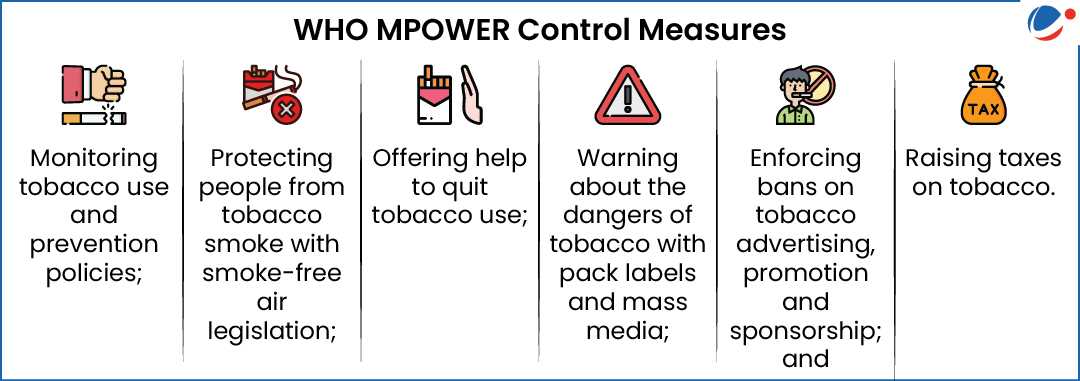It is the tenth WHO report on the global tobacco epidemic that tracks the progress made by countries in tobacco control since 2008.
- Governments reduce the harms caused by tobacco by adopting and implementing the tobacco control provisions of the WHO Framework Convention on Tobacco Control (WHO FCTC).
- WHO FCTC's tobacco control provisions reduce the demand for tobacco as well as others that reduce tobacco production, distribution, availability and supply.
- To support countries in implementing some of the WHO FCTC demand reduction provisions on the ground, WHO launched “MPOWER” in 2008.
- The report focuses on the six proven WHO MPOWER tobacco control measures to reduce tobacco use (See Infographics).

Key finding of the report
- Since 2007, 155 countries have implemented at least one of those policy prescriptions which has benefitted over 6.1 billion people.
- Of all MPOWER measures, large graphic health warnings on cigarette packages have seen the most progress.
- India has implemented stringent measures to curb tobacco advertising, promotion and sponsorship (TAPS) across all forms of media.
- Tobacco tax is the least-adopted MPOWER measure. In India, cigarettes are still affordable.
- India became the first country globally to apply tobacco control regulations specifically to digital streaming content.



